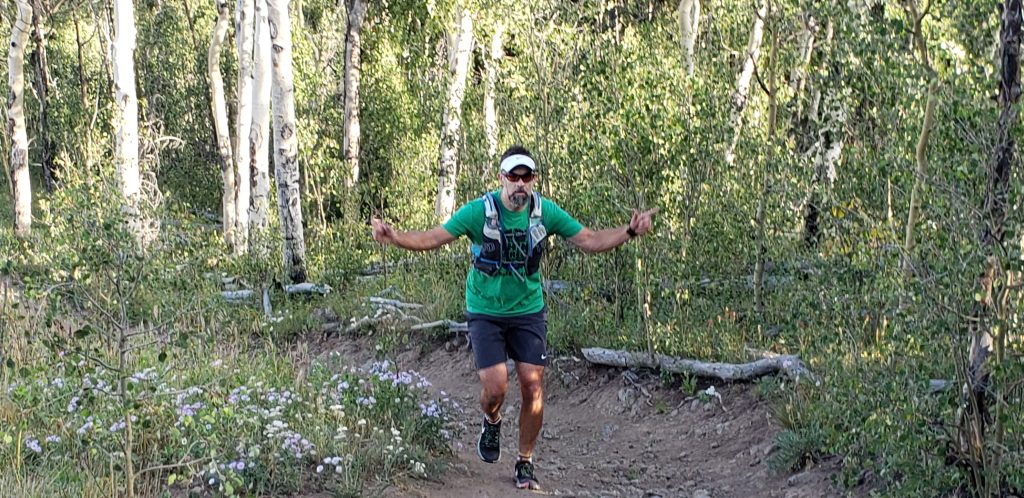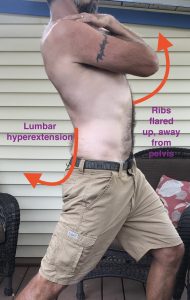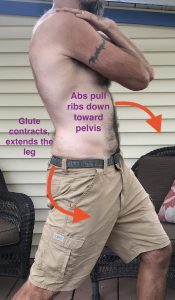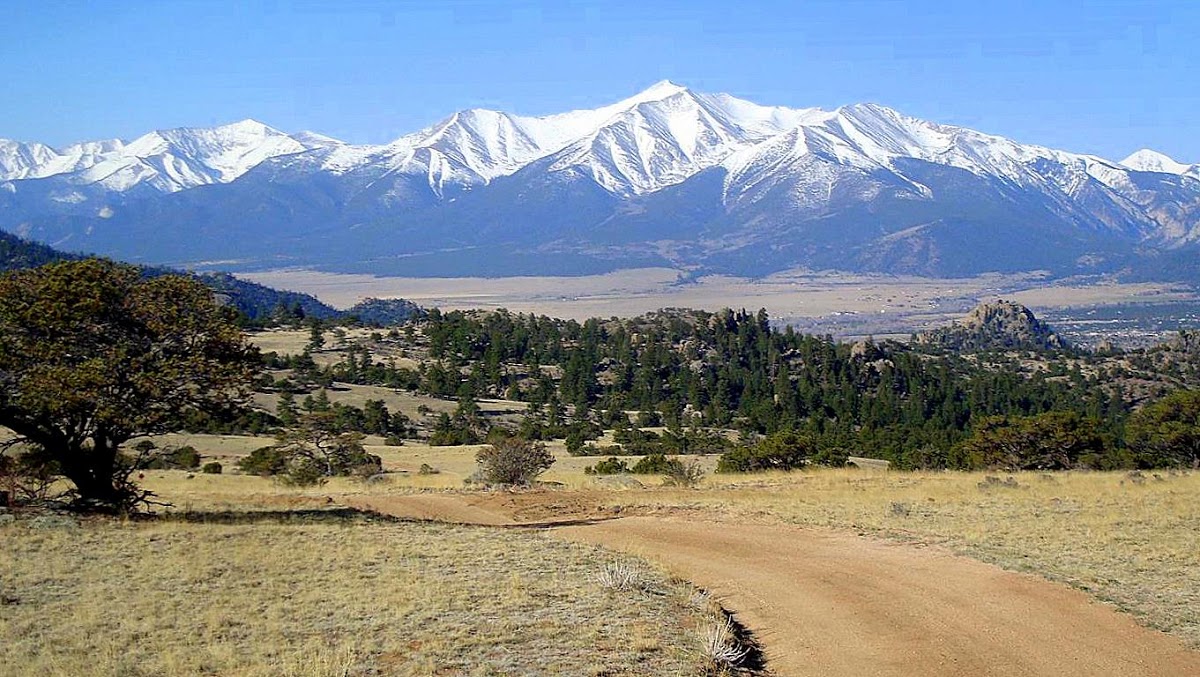I call it the 24-hour rule… which is that after a big success or a bad failure, give yourself 24–48 hours to celebrate the success or grieve the defeat. But then, get back to doing the work itself.
The longer that you stew in a loss or ride the dopamine high of a win, the more you are becoming addicted to that. Whereas if you go back to doing the work itself, it’s a very embodied way of reminding yourself that, Hey, what I really like is the activity, not all the fortune, fame, external validation from the activity.”
That is sage advice from Brad Stulberg, author of Peak Performance and The Passion Paradox. I’ll return to it soon.
The past couple of weeks have been full of emotional highs and lows, frustration, elation, anger, and gratitude. I’m pleased that I came out feeling good in the end despite some disappointment. The big picture is this: I was unable to run the Grand Traverse Run on 8/31.
One week out – Toe pain
Metatarsalgia, aka ball-of-foot pain, roared to life exactly one week plus one day prior to the race. I’d had this in the past but hadn’t felt it in over a year. It was during an interval run. It wasn’t anything out of the ordinary. The pain typically subsides quickly but this time it didn’t. Anger/panic set in.
The 40.7 miles of high mountain running was already intimidating. My prior long race was a trail marathon at 26.2 mi. This was almost 15 mi. longer and it topped out at 12,000 ft. of elevation. I was staring into the unknown. Now, on top of it, a true painful problem was ominous. I was genuinely worried, not just nervous. This was the 2nd year in a row that an injury threatened to derail this deeply meaningful project. All the hard work I’d put in might be for nothing.
I scheduled time with a physical therapist. She assessed some surprising weakness in my hip abductors, specifically the glute medius. That muscle contributes significantly to foot posture. Her assessment gave me valuable information on how to address a weakness in my running but that solution would take time, weeks or months. I had to race in just a few days.
I also met with Dr. Nick Studholme at Studholme Chiropractic in Denver. He’s helped me in the past. He taped my feet to unload the area under the 2nd toe. This wasn’t a fix, but something to help me get through the race. Unfortunately, a short test run the day after the taping wasn’t good. My foot still hurt a lot. I was despondent.
Finally, I had a cortisone shot. I am not a fan of cortisone. The long-term effects of too much cortisone aren’t good. Cortisone is definitely not a fix, but rather a powerful band-aid. For my purposes in this situation, cortisone was exactly what I needed. It was time to run. I would deal with the injury later.
Fast-forward to the day before the race: I felt good. I had no foot pain. We were in Crested Butte and I felt positive. In the course of a week, I’d gone from despondent to optimistic.
A sick dog, a super wife, & damn you Google
Race time was 6 am. I would get up at 4:15 am to get ready. My wife and our dog, Diva, would make the 3+ hour drive to Aspen and meet me at the finish. We all needed rest.
Diva started a hacking cough/dry heave Friday afternoon as we checked into our hotel. We didn’t know why. Dogs do this some time. She gobbled grass. Lots of it. This also happens sometimes. She finally threw up. Typically that’s the end of the story but not this time. She kept hacking. Constantly. We figured it would stop any time. It didn’t. This kept on into the night. Diva paced and coughed, coughed and paced. No one slept.
Finally, around 11 pm, my wife got online and found two 24 hr vets in Gunnison, about 30 miles away. She would take our dog and let me sleep. A super wife! Time ticked away rapidly. Race time was racing my way. I slept.
I woke up, middle of the night. They hadn’t returned They came in a little while later. Both 24-hour vets were closed. Google lied! Our dog was still sick but not worse. The prospect of racing was slipping away. My wife was seriously sleep deprived. Driving would be unsafe. We thought our dog probably needed a vet visit. I hadn’t had much more sleep. The reality of the situation dawned and it was clear I couldn’t race. I didn’t have words for this defeat. Rotten, bloody hell… Nothing else to do.
We headed home. Diva continued to improve. My wife and I had good conversation on the way back. No strife.
The rollercoaster continues
I’d built all this fitness so why waste it? I registered for the Sage Burner 55k in Gunnison at the end of October. We’ve only passed through Gunnison and never spent time there. Though this race didn’t have the epic appeal of the Grand Traverse, I was very happy and excited to run it and to spend time in Gunnison. More despair was around the corner though.
Sunday, the day after the race, I ran with the Denver Trail Runners at Gorgeous Kenosha Pass. It was a perfect, bright, cool day. No crowds on the trail. Three miles in the toe pain returns, just like before. I’m crushed, furious. No sense in running further, I’ll just hurt it more, I turned around and headed back to the trailhead.
On the return, I started to play with how my foot hits the ground and how I push off. I biased heavily to the outside of the foot. Not that I’m walked with my foot completely inverted but I deliberately created more pressure and more pushed through the outside of the foot. The pain decreased. I started jogging with this outside bias. Pain decreased more. I ran back to the parking area with virtually no pain. I turned around and ran back out to meet the group on the return. I finished having run just shy of 13 miles. Greatness! This was the polar opposite of missing the race. Another occasion where words don’t work to describe the feelings! Spectacular! I felt like this:

WAAAHOOOO!
Gratitude & no whining
Hard times and defeat always provide a learning opportunity. I can’t decide how I feel but I can decide how I react to those feelings. The pain of missing this race for the 2nd year in a row was powerful. Made me sick to my stomach. How could I react? Pout, gripe, and rage? Did my wife need to hear repeatedly how bad I felt, even though she already knew? Would complaining change the past? Nonsense nonsense nonsense! Complaining about something over which I have no control is a waste of energy and it may even be bad for my mental health. It’s bulls%it, to put it another way.
I did grieve the race though. I spent about 24 hrs feeling the disappointment. I felt sad and incredibly frustrated. There was no use in ignoring those feelings. But griping and whining had no place in the process. It was time to get back to work in preparation for the Sage Burner. My coach, Andrew Simmons of Lifelong Endurance has been a tremendous help. He’ll be guiding me for another couple of months.
There was a time in my life when I felt like my life was lacking a lot of things. I fixated on my failings and what I didn’t have. That wasn’t useful. Now I try to be grateful for the multitude of good people and things in my life. Specifically, in this case, I was and am grateful for the following: grateful that Diva got well; grateful for my wife who supported my efforts; hugely grateful for that good Sunday trail run during which my foot felt bad and then good; grateful for my friends, clients, and family who donated to NRDC (You can still donate btw!); grateful for being a trail runner with the chance to do something few people will ever imagine.
Everything isn’t always perfect, but most things are pretty good.




